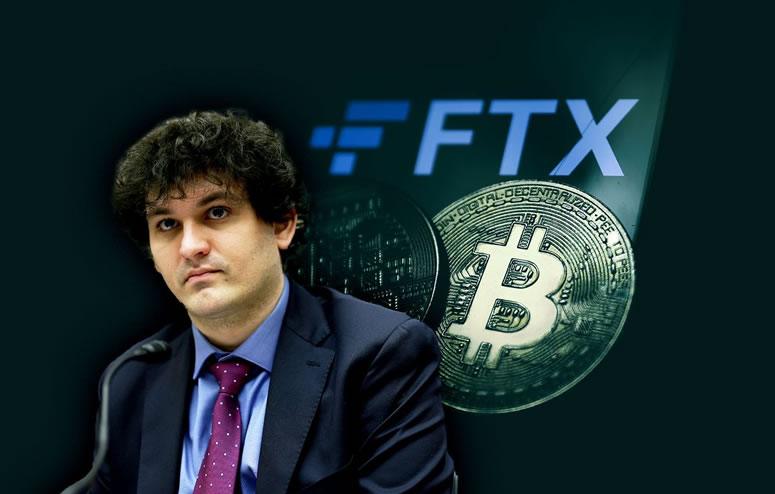FTX Pays Lawyers $200M To Avoid Returning Victims' Money
What is the limit for FTX bankruptcy? Are Sam Bankman-Fried victims being double-crossed? Legal fees for FTX's bankruptcy process have reached $200 million, and the cost is expected to rise.

The activist in FTX raises questions about these special fees, which pay for the restructuring of the suspected fraudulent crypto exchange, and the recovery of the victim's money from several receivers are broken. These costs are indisputable, exceeding the costs of other banks that are complicated by different methods.
This is important because the legal fees ultimately come from the proceeds that will be returned to FTX creditors, including retail investors, at the end of the process. Damaged FTX customers owed the exchange $8.7 billion, and the recovery of most of the lost funds seems increasingly difficult. But at the current rate, unpaid bills can consume almost 10% of what is owed to the affected people.
The High Cost Of Bankruptcy
Debt funds are being used for small amounts," said Sunil Kuvari, a former FTX client.
Kuvari based this claim on comparisons with other currencies in recent history. FTX, he found, turns out to be more expensive than similar systems, both in absolute terms and as a percentage of the underlying assets and liabilities.
“ I think, as a percentage, it should be like [the rate of withdrawal] Celsius. But by this metric, [payers] are paying more than $30 million and $40 million per month. ”
Celsius Network reported $5.5 billion in debt at the start of its bankruptcy, compared to $8.7 billion that FTX currently owes to its customers.
But Celsius' revenue reached just $87 million after six months. FTX's revenue has already exceeded $200 million during the same period.
Kuvari is a former financial professional who said he had about $2.1 million in assets in FTX when it collapsed. He brought class-action lawsuits against actors and celebrities who had defrauded FTX, and became a prominent figure among creditors.
It is very tempting to check the expenses of bankruptcy: the cost of bankruptcy is very high and can mean that it will lose another $100,000 or more.
Kuvari raised the alarm about the unpaid bills following a June 20 report from bankruptcy auditor Katherine Stadler, the attorney in charge of restructuring the budget. In the report, Stadler suggested some cost reductions, but largely described excessive costs as appropriate for the complexity of the situation.
If the bankruptcy of FTX takes two years - the length of Enron's bankruptcy - the management team will be on track to pay about $800 million at current rates. Enron's bankruptcy cost $700 million, or more than $1.1 billion in 2023 dollars.
This would mean that the bankruptcy of FTX would cost about 3/4 of Enron. But among Kuvari's points is the fact that Enron is almost 100 times larger than FTX in terms of capital and personnel. FTX assets remaining and acquired amounted to about $ 7.3 billion this month, while Enron reached $ 110 billion, or almost $ 190 billion in 2023 dollars.
Creditors of CEO John Jay Ray III and FTX were receiving about 75% of Enron's money to reveal 4.% of the assets from the exchange. And while the management of FTX was famous and chaotic, Enron's tricks turned out to be similar in complexity: to create hundreds of turnovers, deliberately followed with the intention of hiding the company's debts even from their own auditors.
So why does FTX stop cost so much in its size - and can these costs be contained?
"Frivole" - or Complicated?
It is probably incorrect to specify the salary for the first six months of the FTX bankruptcy until its termination. Stadler's Costs Examiner's report, while admitting that the process "appears to be a very expensive process in all areas", describes the initial stages of the collection process as chaotic and perhaps unnecessary, but for reasons cause it.
“ The economic process is clear and rational and the importance must be considered at the time the projects are carried out, not after the fact. Some [paying] candidates put together groups that end up being too big. Some companies cut out the professionals who are the professionals they don't need in the long run. Others have directed resources from other parts of their organization to fill gaps in their organizations. A debt analyst cannot in good faith conclude that any of these methods are unreasonable at this time. ”
SBF's chaotic strategy to lose its customers' money seems to have been improvised rather than planned. This rocky start means that future costs will decrease as the system improves. Stadler emphasizes that the bankruptcy group "will continue to refine their processes to identify and eliminate inefficiencies and excesses as the case progresses." Creditors will want to look closely at future reports to make sure this is actually happening. Sadler's report also called for better management of certain areas of insolvency. He found that financial institutions were using a higher number of executives than usual, and the associated higher costs. Sadler also pushed members to reduce the number of people at meetings and tours.
Specifically, Sadler ordered a negotiated reduction of 5% to 10% of the claims filed by the law firm Sullivan & Cromwell and the management firm Alvarez & Marsal, on grounds such as "due diligence toward face to face".
But even after discounting its earnings, comparisons with similar systems clearly show Alvarez & Marsal charging more than usual. Of course, A&M is also part of the bankruptcy of another crypto blunder, and it charges a lot less in this case.
"Alvarez and Marsal charge Celsius $1.7 million per month," Kuvari observed, "and charge FTX $11 million per month." In a similar comparison to Enron, this means that A&M charges about six times more than the bankruptcy fee which is related to only about 50% more debt. As a percentage, A&M took about 11% of the fees in Fall Celsius, but received about 30% of the FTX fees.
A&M handles a variety of tasks, including resource identification and recovery. This can largely be explained by the discrepancy in the rate of money, as the former FTX CEO Sam Bankman-Fried is determined to get the money of his clients as quickly as possible, or family members, to "charity "His favorite. or complete strangers. Losing that money and fighting to get it back seems difficult. A&M also helped create financial records in the case, and this appears to be another complication. Sadler described the state of FTX as having collapsed as a "hot pile of rubble" with many accounts missing. This echoed the earlier statement of John Jay Ray III, who described the situation as worse than that of Enron.
We reached out to A&M for comment on those numbers, and will update this story if we hear back.
But Kuvari disputes the idea that FTX's bankruptcy was more complicated than Enron's. "Actually, when I compare Enron to FTX, it seems spotty. [FTX is] a company that has been operating for three years. It has 200 employees at most and Enron has 20,000 employees. More important than numbers, Kuvari argues that Enron's fraud was just as bad as FTX, maybe even more so.
"Enron had 3,000 unpaid SPEs," or special purpose entities, Kuvari pointed out. These companies were created specifically, by financial regulators, to hide their responsibilities from auditors and the public. In contrast, Kuvari says, FTX includes "only the meeting of the revolution. Probably as simple as possible.
The irony is that if Enron covered its tracks with fraud, it at least kept records of those activities. In fact, some documents trace the production of Enron's EPS to the crimes of the principals who controlled this fraud. Sam Bankman-Fried, it is becoming clear, is not as knowledgeable as many people think, either way about the matter. His totally chaotic approach to losing his clients' money seems to be improvised rather than appropriate. But that didn't seem to help him stay afloat any more than the Enron conspirators, who engaged in fraud for the better part of a decade before he was caught.
But the apparent impotence of the SBF has made life difficult for those left to clean up its mess. While there are many reasons to look at the expenses of FTX's funders, what is clear is that Bankman-Fried himself is taking the last pound of flesh from many people. FTX bit before they took the track in October.





